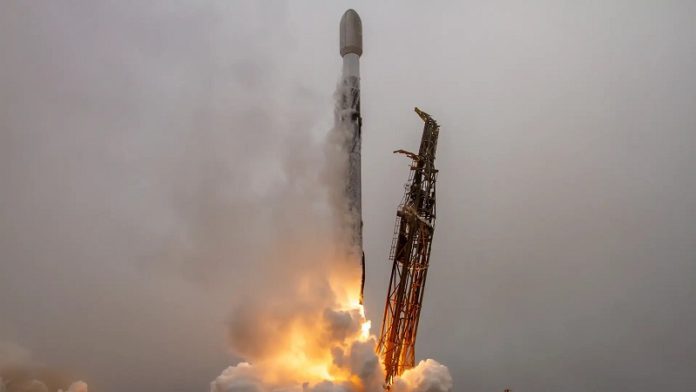
A small satellite about the size of a shoebox has been launched into space to test exciting new quantum communication technology.
Called QUICK³, the satellite was developed by a team of researchers led by Professor Tobias Vogl from the Technical University of Munich (TUM).
It blasted off into orbit on Monday, June 23, from Vandenberg Space Force Base in California.
The mission’s first results are expected by the end of the year.
Weighing just 4 kilograms, QUICK³’s mission is to test how well quantum communication components perform in space.
The goal is to one day create a secure global network for sending information that can’t be hacked or intercepted.
So how does quantum communication work?
Unlike traditional methods, which send messages through fiber-optic cables using light beams with many particles (called photons), quantum communication uses single photons—just one particle of light at a time.
These single photons have unique quantum properties that make the transmission secure. If someone tries to intercept the message, the quantum state of the photon changes, which immediately reveals the tampering attempt.
However, because these photons can’t be copied or boosted like traditional signals, they can only travel short distances through cables.
That’s where space comes in. In the upper layers of Earth’s atmosphere, light travels more clearly, with much less scattering or absorption. This makes satellites ideal for long-distance quantum communication.
In the future, hundreds of such satellites could form a network that lets us send perfectly secure data around the world.
But before that can happen, scientists need to make sure the technology can survive and work in space. That’s the main goal of the QUICK³ mission. It’s the first time that single-photon quantum communication technology is being tested on such a small satellite.
Professor Vogl says most other similar satellites are either too heavy and costly or use lasers instead of single photons. Laser-based systems are less secure and have slower transmission speeds. QUICK³, on the other hand, aims to send secure data faster, although the satellite only has a few minutes during each orbit when it can communicate with ground stations.
The mission also has a second scientific goal: to test a key principle of quantum mechanics in space. The team wants to see whether the “Born rule,” which predicts the chances of finding a quantum particle in a specific place, still works in zero gravity. It’s a fundamental rule in physics, but no one has ever tested it in outer space—until now.
Researchers from Germany, Italy, and Singapore are all part of this pioneering project. If successful, QUICK³ could be a big step toward making quantum communication a part of everyday life.





